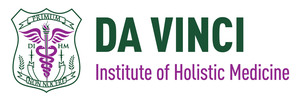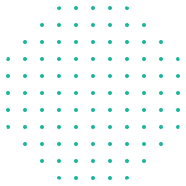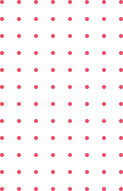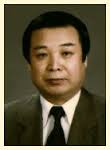Su Jok Therapy Online Course
Su Jok Therapy Online Course
| These are the specifications of the Da Vinci Institute of Holistic Medicine’s
SU JOK THERAPY online course: |
|
| 1. Awarding Institution / Body: | Da Vinci Institute of Holistic Medicine |
| 2. Teaching Institution: | Online and distance learning, with tutor support |
| 3. Programme Accredited by: | Professional Naturopathic Course |
| 4. Final Award | Su Jok Therapy Diploma |
| 5. Program title: | Su Jok Therapy online course |
| 6. Course Code and level: | SJT |
| 7. Duration of program: | One trimester or 12 weeks |
| 8. Total number of study hours: | About 120 study hours |
| 9. Enrolment requirements: | None |
| 10. Enrolment date: | Anytime |
| 11. Fees: | Full payment: €440 euros; Instalment plan: €154 per month for 4 monthly payments (5% extra). |
COURSE CURRICULUM
Lesson 1 – History and Introduction of Su Jok Therapy
The word SU in Korean means the hand and JOK means the feet. Thus the name itself speaks all about the therapy. Anybody who applies himself to learning the basics of Su Jok therapy can achieve this in less than an hour. That is the beauty of this therapy! Su Jok practitioners, however, who are treating more chronic problems, need to study in more detail to familiarize themselves with the protocols, the correspondence anatomy, as well as the various methods of stimulating the painful correspondence points that are identified using the diagnostic probe.
Lesson 2 – The Standard Correspondence System
The hand is the most similar to the body, which is clearly seen in its structure. The hand is similar to the body in:
- The number of protruding parts;
- The level of location of protruding parts;
- The direction of protruding parts;
- The proportions of protruding parts;
- The number of segments and joints of protruding parts;
- The relation of protruding parts to the line of symmetry;
- The likeness of the thumb to the head.
Lesson 3 – The Insect Correspondence System
The Insect System is found in every finger and every toe – this means that instead of the whole hand representing the whole body, now each finger or toe represents the whole body.
In the «insect» system the distal phalanges (top of the finger) correspond to the head, the middle phalanges correspond to the thorax, and the proximal ones to the abdomen.
The skin folds of the joints of both the fingers and toes create the borders between the different body parts. The distal interphalangeal joint corresponds to the neck; the proximal interphalangeal joint corresponds to the diaphragm. The area around the skin fold at the finger base houses a correspondence to the lower part of the small pelvis.
Lesson 4 – The Mini Correspondence System
As the projections of the distal phalanges of fingers and toes carry the micro correspondences to the hands and feet, the correspondences to the nail phalanges of fingers and toes in the standard systems of correspondence of hands and feet are the microsystems of correspondence to the body. In them, the information about the whole body is located more distally, than in the mini-systems, and in a more concentrated way.
Lesson 5 – Principles of Treatment Using the Standard Correspondence System
Stimulation of the painful correspondence points usually produces an immediate effect on the affected area in question.
Generally, as soon as stimulation begins, there is an improvement in the condition of the patient – a decrease in pain, the occurrence of warmth in the affected area, as well as a general feeling of well-being. There will also be a decrease in pain on the painful correspondence point.
This is perhaps one of the most effective treatments for all pain conditions anywhere in the body – it is unparalleled compared to any other natural method of treatment.
It is critically important to find the CORRECT painful correspondence point – the degree of success of the treatment will depend on how successful you are at finding the point.
Lesson 6 – Tools Used to Stimulate the Correspondence Points
In order to successfully treat the painful correspondence point, it is necessary to correctly identify the point or points, estimate the depth of their location, and select in each case an appropriate method of stimulation.
In everyday life, all the elements of the Homo system are continually stimulated naturally with every body movement, for both the hands and the feet. This is a wonderfully natural way of continually stimulating all body organs and systems every time we use our hands and feet.
In the many years of working with Su Jok by many practitioners around the world, they all report that there is practically no contraindication for treatment by acting on the correspondence points.
Lesson 7 – Su Jok Seed Therapy
Νeedles, massagers, and other artificial stimulators can be used for the stimulation of therapeutic points and correspondence areas, as discussed in previous lessons. However, various parts of the living plant and their seeds can also be used, such as:
- Needles
- Leaves
- Petals
- Grafts
- Seeds (fruits)
The impact of natural materials on humans is interesting as there is a resonance and energy exchange between the plant’s resonant energy, and each one differs, and the body’s resonant energy. Given that plants and herbs have been known to be therapeutic for millennia, it is no surprise that this healing energy can be used on correspondence systems of the body.
Lesson 8 – Using Su Jok Therapy in Clinical Practice
In the “insect” system, the back of each finger corresponds to the spine, and this is a good system to use when working on the spine. The cranial bones are projected on the upper phalanx, or the tip of the fingers and the thumb, as well as the toes. The correspondence to the cervical section of the spine (neck) will be found where the first joint of each finger and toe begins. The correspondence to the thoracic section, up to the 8th thoracic vertebra can be found where the second joint begins. Correspondence to the low thoracic (from the 9th through the 12th vertebrae), lumbar, sacral, and coccygeal sections lie in the lower finger phalanges, from where each finger ends to the knuckle joint.
Lesson 9 – Su Jok First Aid and Emergencies – Part 1
The use of conventional methods of first aid is sometimes difficult to practice, particularly in road traffic accidents that involve being trapped in the car, or in very serious injuries where the body cannot be moved.
In such cases, and many others, Su Jok therapy has much to offer using very simple manipulations which make it possible to give an exceptionally efficient first aid right on the spot and during transportation of the patient.
Su Jok therapy can be regarded as an independent first-aid method that can be practiced by virtually everyone who has a good command of its basics.
Lesson 10 – Su Jok First Aid and Emergencies – Part 2
The use of conventional methods of first aid is sometimes difficult to practice, particularly in road traffic accidents that involve being trapped in the car, or in very serious injuries where the body cannot be moved.
In such cases, and many others, Su Jok therapy has much to offer using very simple manipulations which make it possible to give an exceptionally efficient first aid right on the spot and during transportation of the patient.
Su Jok therapy can be regarded as an independent first-aid method that can be practiced by virtually everyone who has a good command of its basics.
Lesson 11 – Su Jok and Accidents
This lesson concentrates on how Su Jok Therapy can be used in a variety of accidents and the benefits that it can give.
FINAL EXAMS
The final exam is taken online and is timed (70 minutes) – there are 50 multiple-choice and true/false questions. A pass mark of 60% is required with 80% being awarded a Distinction.
COURSE MATERIAL
All the course material, assignments, and final exams are online, so there are no additional books required for this course. However, there are many online books and articles available in .pdf format that you can download onto your computer so that you may read these at leisure.

















Reviews
There are no reviews yet.